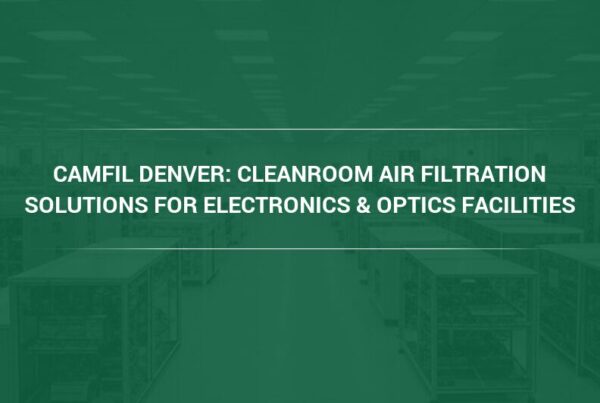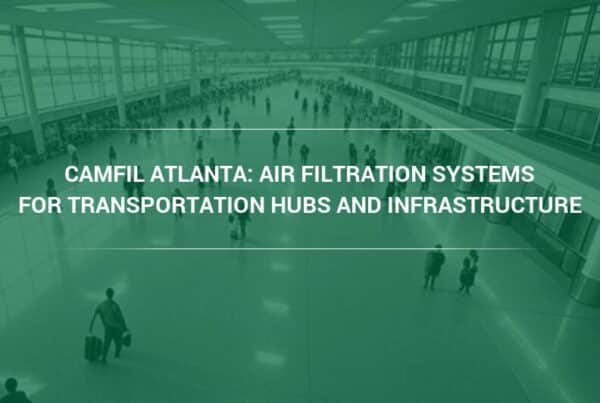Proper design and safeguards can help mitigate the effects of bad hospital air quality that can lead to serious health issues
Outdoor air pollution is a serious threat, especially in health care facilities that are supposed to be sterile and clean, which is why the level of hospital air quality is so important in preventing serious infections.
In fact, infections in hospitals have become a big problem throughout the U.S.
According to the Centers for Disease Control and Prevention (CDC), there are more than 600,000 people in the U.S. each year who develop infections in hospitals, and 75,000 of them will die.
That means that an astounding 12 percent of the people who develop infections during hospital stays will die, which is too high a number for facilities that are intended to save people’s lives.
And while bacteria that originate in IV lines and tubes cause many of the infections, some of the infections originate through airborne viruses and bacteria that find the ideal environment inside a hospital, and spread.
For example, C. diff, which is a virulent type of bacteria that can cause a variety of ailments, including severe diarrhea, lives on surfaces for days.
That means that a hospital worker with C. diff on a pair of gloves who touches a curtain that separates two patients, can transfer the bacteria to that curtain.
And without proper air filtration devices, that bacteria will spread and infect people who frequent that area.
Common Contaminants Affecting Hospital Air Quality
Hospitals are unique in that infections reign wherever a person goes, and the fact that they are contained environments in which infected people are in close proximity with non-infected people, creates a cauldron in which the spread of infection is relatively quick.
Airborne contaminants fare no differently in hospitals, as they can flourish in an environment that incubates their qualities in a way that has negative consequences on good health.
Common types of contaminants in a hospital include mold such as Aspergillus, which results from moisture and creates spores that become airborne with the slightest disturbance.
Studies have also shown the presence of airborne viruses and fungi that are created by moisture and water that can cling to ducts and vents, and spread throughout a hospital when cool air or heat blows through the HVAC system.
These contaminants can have a serious effect on patients who have suppressed or weakened immune systems, and are much more susceptible to lower grade airborne bacteria and viruses that would not affect people with healthy immune systems.
How Hospital Design and Construction Can Help With Air Quality
Poor hospital air quality is usually a perfect storm of bad ventilation, inadequate HVAC systems, and a lack of air filtration systems to ensure that contaminants drawn from polluted outdoor air are eliminated.
Hospitals that are not built to keep airborne contaminants from escaping into other rooms may be at a higher risk of rampant infections.
That’s why some hospitals are designing their rooms to help restrict the spread of airborne contaminants, by keeping them isolated to one location.
Children’s Hospital in Fort Worth, Texas accomplished this goal by building an emergency room with an HVAC system that used displacement ventilation, in which air that circulates through the room flows through a return duct that has a HEPA filter that eliminates a high amount of particulates and infectious airborne organisms.
That means that the air that flows back into the room has been filtered to a high level, helping to restrict the spread of contaminants.
In addition, some hospitals are choosing to renovate with Leadership in Energy and Environmental Design (LEED) green building rating systems, which reduce energy costs, improve ventilation and contribute to a greater level of good indoor air quality.
Camfil’s Clean Air Solutions
For more than 50 years, Camfil has been committed to providing affordable and energy-efficient commercial air filtration solutions to clients throughout the U.S., with the guiding principle that clean air should be a human right.
Hospitals seeking to ensure the safety of their patients and staff can benefit from a consultation with a Camfil representative, who can offer a number of clean air solutions.
From conducting on-site tests to evaluating hospital air quality to providing industrial HEPA filters, devices that create negative pressure and containment systems, Camfil is the one-stop shop for all of a hospital’s air filtration needs.
Lynne Laake
Camfil USA Air Filters
T: 888.599.6620,
E:Lynne.Laake@camfil.com
F: Friend Camfil USA on Facebook
T: Follow Camfil USA on Twitter
Y: Watch Camfil Videos on YouTube



